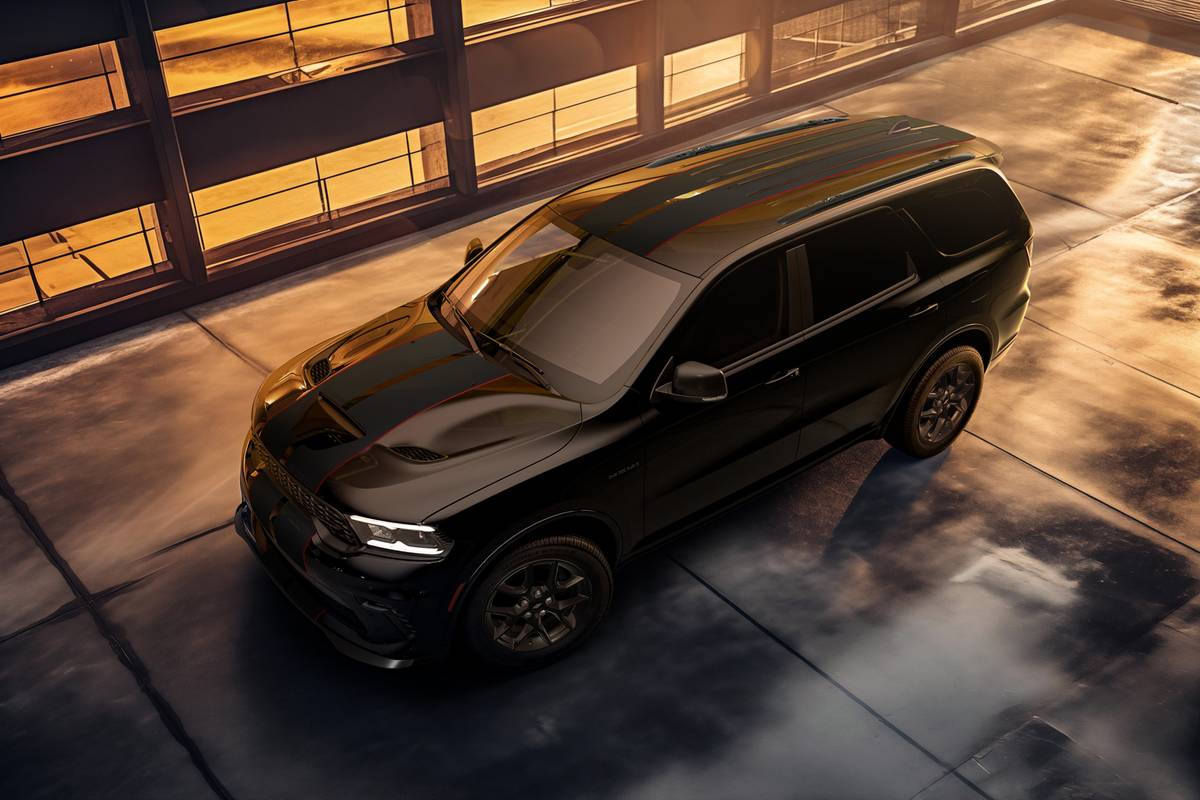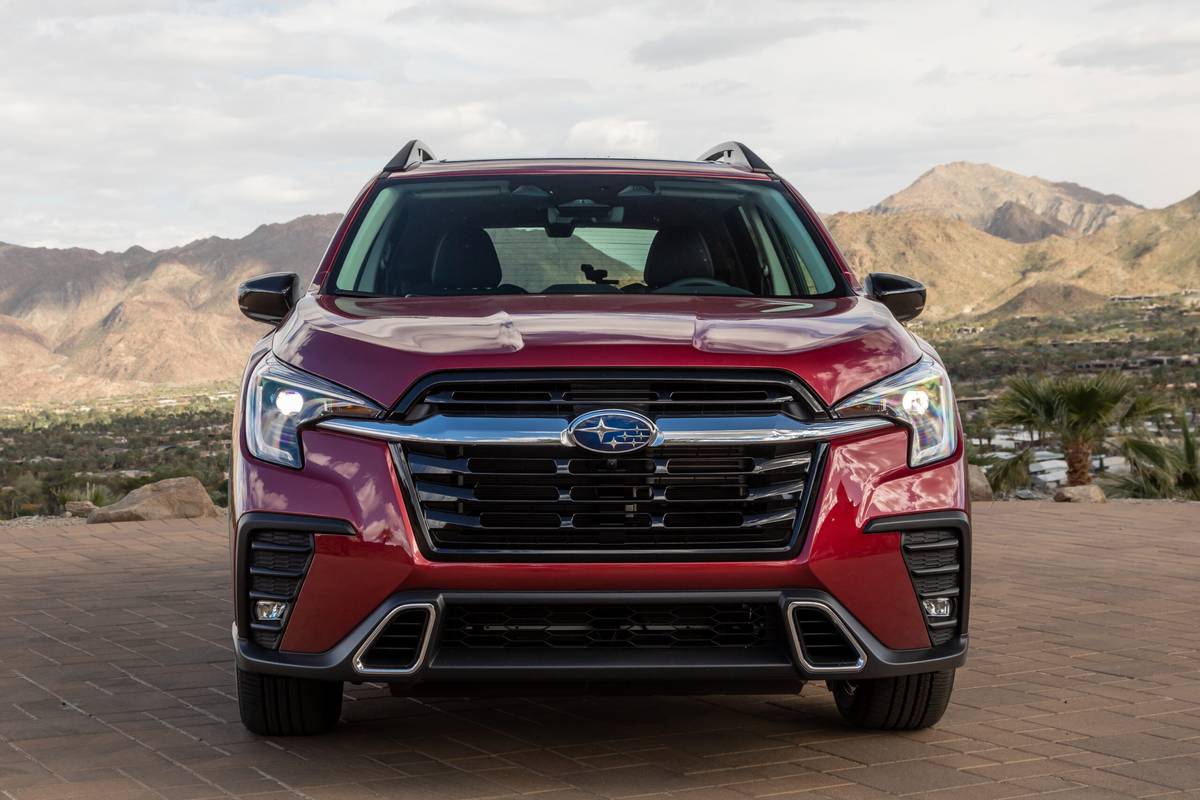chicagotribune.com's view
Prelude has been Honda’s experimental car, the vehicle to test the merits of such systems as anti-lock brakes, double-wishbone suspension, variable valve timing and four-wheel steering before passing the technology on to other members of the family or scrapping it (four-wheel steering) and trying again.
As such, Prelude never has been meant to be a volume car, obvious when you consider its history has been marked by bland styling, cramped cabin room, less than sizzling performance and handling that sometimes made you feel as if you were driving a Cadillac Fleetwood sedan rather than a sport coupe.
For 1997 Honda’s test bed gets a few more features for motorists to evaluate: Active Torque Transfer System (ATTS) and Sequential Sport Shift (SSS) automatic transmission.
ATTS is one of those sophisticated systems that few will understand and perhaps even fewer will get to appreciate because it is offered only in the uplevel SH (super handling) version with 5-speed manual.
ATTS redistributes power to the drive wheels to alter the car’s yaw, or turning rate, for more responsive handling in corners. Engine sensors also determine the amount and timing of steering effort when entering or leaving a turn.
In layman’s terms, it’s a go-where-you-point-it system that focuses on controlling lateral movement. As a result, it feels as if the 16-inch treads are coated with adhesive. Cadillac offers its own variation of it for 1997 as well.
Honda let the media loose here at a preview of the ’97 Prelude at the Waterford Hills racetrack, a very unforgiving, twisting, winding, dipping and hilly route with blind corners that tests suspension and handling more than speed.
The ’96 Prelude would have been at home in the parking lot here, the ’97 deserves to move onto the pavement. ATTS means grip where normally you’d have gripes as wheels left the track for the grass infield or, worse, those cross-laced tires that form walls at the turns.
In addition to ATTS, Honda engineers increased body rigidity (less flex, less noise) and revised the suspension and steering systems. The four-wheel, double-wishbone suspension provides more straight-line as well as lateral stability for more agile handling, and the power steering provides quicker, more precise response to wheel input without lingering into or out of a corner or turn. With ATTS the Prelude is fun to play with.
The SSS automatic transmission is another name for what Porsche calls Tiptronic and Chrysler Autostick. It’s a 4-speed automatic that allows you to slip the lever to a separate slot and upshift or downshift like with a manual but without having to fiddle with a clutch.
SSS is meant for those who want the ability to upshift or downshift in a sporty coupe, but typically find themselves in rush-hour traffic or construction zones and don’t want the hassle of havin g to use a clutch.
The so-called clutchless transmissions are designed to let the manual fanatic buy a sporty car that other family members would veto if it was a 5-speed only.
In truth, don’t expect to use SSS all that often.
You can opt for Prelude with 5-speed manual or 4-speed SSS, but you can get ATTS only in the Prelude SH and only with 5-speed manual, so you have to choose between the ease of shifting with SSS or optimum ride, handling and motoring fun with ATTS.
Honda said it could offer ATTS with automatic if enough consumers demand it. Only about 5 percent of the 20,000 Preludes Honda expects to sell in 1997 will offer ATTS, and you can’t expect too many folks to demand the system with automatic when so few will have the chance to try it.
Because ATTS is one of those systems that performs without you having to push a button or turn a dial, you’ll enjoy it without realizing you’ve got it. You’ll appreciate ATTS most if you fi st drive the base model and then step up to the SH . Don’t look for any SH versions until February, however.
Why offer it if Honda is going to make it so difficult to obtain? Perhaps because Honda has plans to make ATTS available in one of the models from its Acura luxury division soon, such as a CL coupe.
The base Prelude with SSS and without ATTS is a tamer machine that will take corners a tad more widely and respond to wheel input a split second slower than with ATTS. The sounds of tires squealing against asphalt were most prevalent here when a member of the press ventured onto the course in a base model.
For 1997, Honda has revised its Prelude lineup. It had offered three models–S, Si and VTEC– and three engine choices, but has whittled that to two models–base and SH–and one engine, its 2.2-liter, 195-horsepower, 4-cylinder VTEC, available with automatic for the first time. With automatic, the horsepower rating is 190.
Prelude’s strengths for 1997 include new sheet metal with a longer, lower, less rounded look. In back, the controversial upright half-moon deck lid that, with the spoiler, looked like the St. Louis Arch has been leveled out. Bulging rear taillamps that looked much too big for the body have been replaced with more sensibly sized horizontal lamps.
With the redesign came different dimensions. Wheelbase was stretched to 101.8 inches from 100.4, length to 178 inches from 174.8 and height to 51.8 inches from 50.8 inches.
The longer wheelbase and length contribute to improved ride, the added height to better headroom. Honda boasts some of the added length gives rear-seat occupants more room, but the back seat is still big enough for only a couple of rugrats.
The cloth seats upfront are cozy and offer good long-distance support as well as the ability to hold you in place in aggressive maneuvering.
Dual bags and ABS are standard, but traction control is not available even as an option.
After the Waterford Hills playday, we drove a base Prelude back to Chicago and found some irritations you wouldn’t notice on the track, such as the glass sunroof opening too far forward in the roof so you experience glare when it’s open only a few inches. The farther back the opening in the roof, the less chance for glare.
When squirting the windshield to clear off assorted bugs that found they didn’t bounce off glass at 70 m.p.h., the wipers like to deposit the insect stew onto the side windows–or into the passenger cabin if the windows are open.
Also, open the sunroof and crack the driver’s side window a couple of Inches and the wind noise is rather annoying. Close the driver’s window, and the cabin becomes quiet again.
If you take tollways frequently, there’s a handy center console compartment for your change. Smokers may note that the coinholder resembles what used to be called an ashtray, an item availab le only as an option through the dealer, not the factory.
Honda refused to reveal Prelude prices, saying only that the base model should start at about $23,000 when it goes on sale in November, the SH with ATTS at about $25,000 when it goes on sale in February.
Standard equipment includes power windows, power door locks, power mirrors, cruise control, air conditioning, 6-speaker AM/FM/CD stereo system, power slide open/tilt sunroof, adjustable steering wheel, 12-volt power outlet in the center console, folding rear seat backs for pass-through from trunk to cabin, front and rear cupholders and an “immobilizer” anti-theft system with a key coded only to that car’s ignition.
The SH adds ATTS, body-colored rocker panels (black in base model), deck-lid spoiler and leather-covered shift knob, which means ATTS is a rather expensive system because the rocker panels, deck-lid spoiler and leather-wrapped shift lever could account for only a fraction of th extra $2,000 in price.
Though Honda didn’t elaborate on option prices, it did say SSS will cost about $800.
>> 1997 Honda Prelude Wheelbase: 101.8 inches Length: 178 inches Engine: 2.2-liter, 195-h.p., 16-valve, 4-cylinder Transmission: 4-speed automatic (5-speed manual standard) EPA mileage: 22 m.p.g. city/26 m.p.g. highway Base price: $23,000 base (estimated); $25,000 SH with ATTS (estimated) Price as tested: Not available, but 4-speed automatic will run about $800. Pluses: New design without ugly rounded rear end of previous model. More interior room with more comfortable front seats. Only the more powerful 2.2-liter, 195-h.p., VTEC 4-cylinder offered. New 4-speed automatic with Sequential Sport Shift, Honda’s automatic/manual trans without the need for a clutch. Dual bags and ABS standard. ATTS enhanced handling system provides optimum cornering and steering. Minuses: Still no adult rear seat room. ATTS offered only on higher-priced SH model and only with 5-speed manual. No traction control on any model. >>
Latest news



